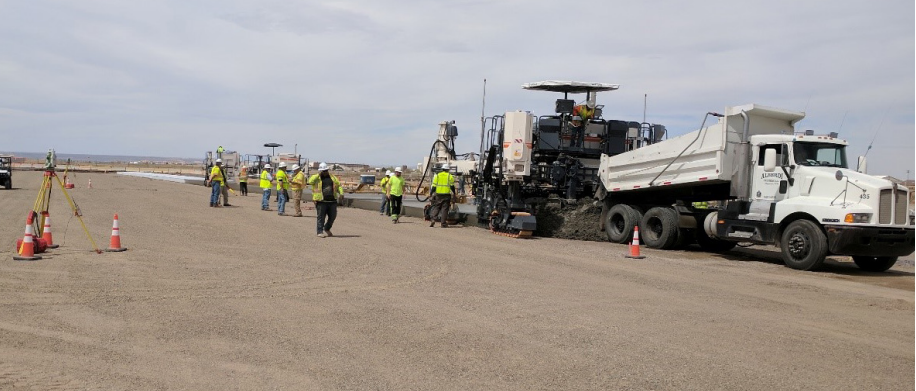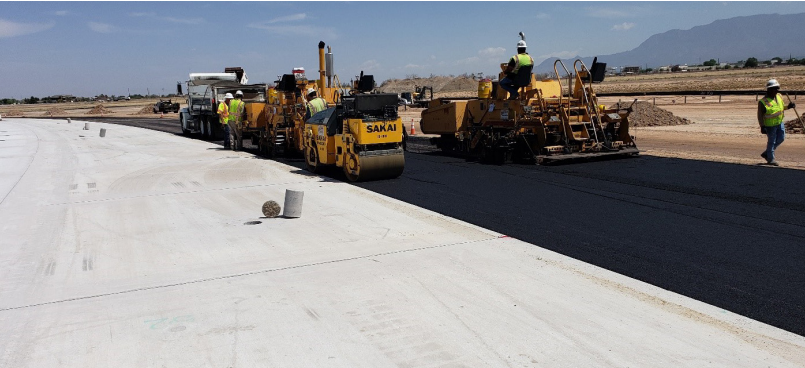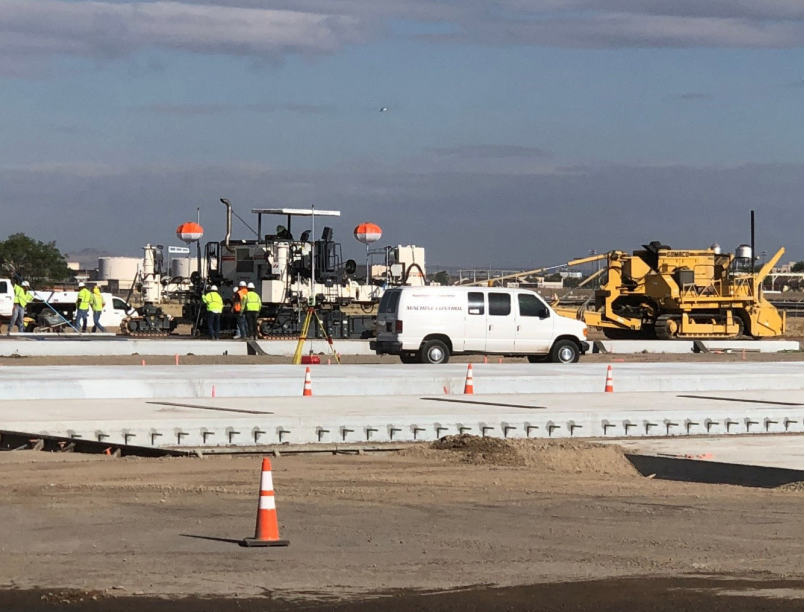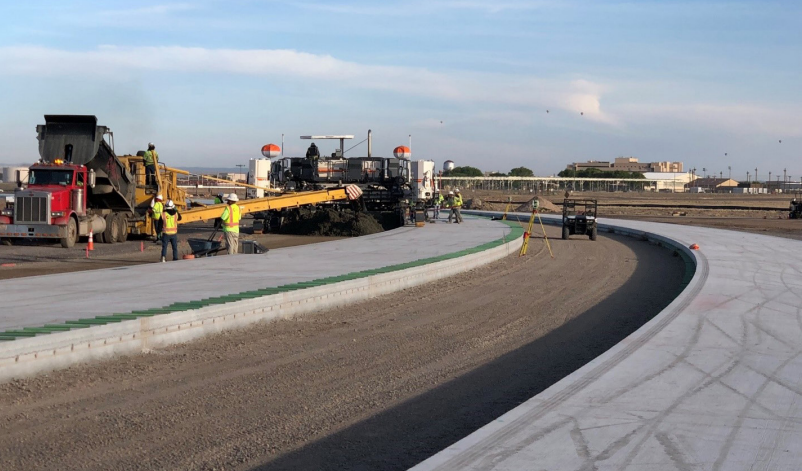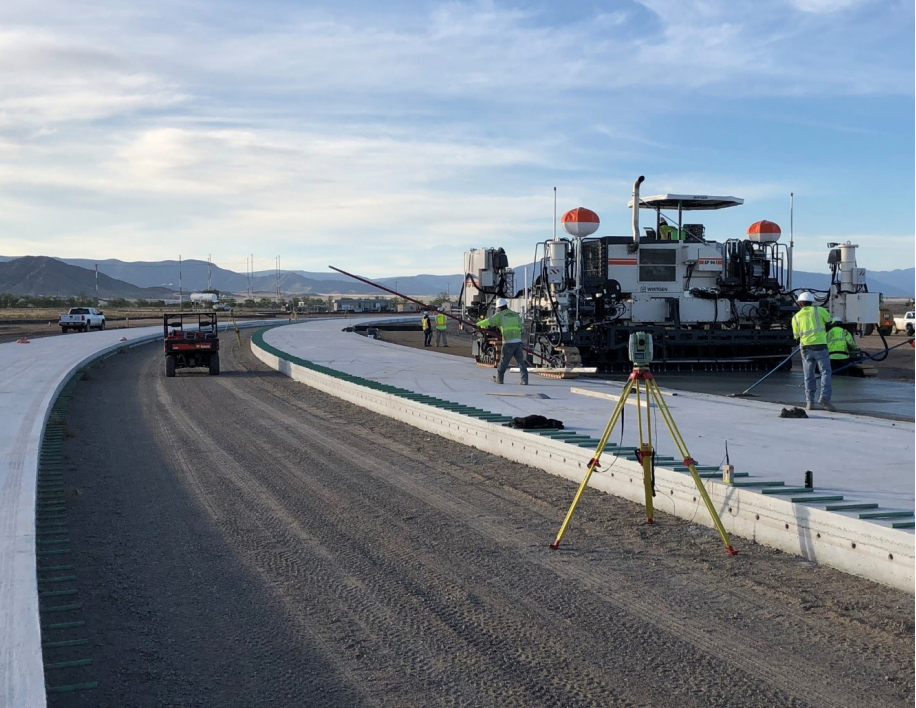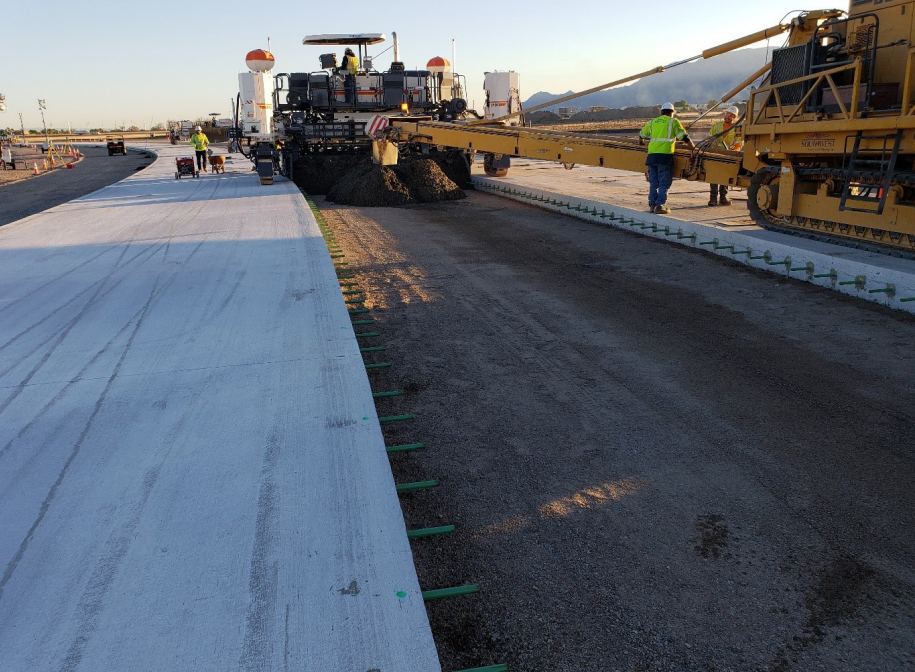USAF- Repair Taxiway To Pad 5 - Kirtland AFB, New Mexico
Project Summary
Southwest Concrete Paving (SWCP) served as a key subcontractor for the Repair Taxiway to Pad 5 Facility project at Kirtland Air Force Base in Albuquerque, New Mexico. The project consisted of removing and replacing an existing heavy-duty airfield concrete pavement taxiway and associated hot mix asphalt shoulders containing both flush-mounted and above-ground airfield lighting. This taxiway served as the sole feeder route to Hot Cargo Pad #5 utilized for loading and unloading live munitions onto aircraft. The Hot Cargo Pad itself was completed in a later supplementary project.
Paving
Concrete paving for the project consisted of placing 16-inch-thick airfield concrete utilizing UFGS criteria in section 32 13 11. The paving section was approximately 2,100 LF with a crowned centerline having a constant 1% fall to each side of the center. The taxiway section was arc-shaped, making a 90-degree turn over approximately 1,600 feet of its length. The taxiway terminated with a temporary loading pad intended for mission deployment while the adjacent Pad 5 was constructed. The alignment of the main taxiway also spanned Randolph Avenue, which is used as a primary thoroughfare for local vehicular traffic. Transverse contraction joints were dowelled, with baskets being utilized and placed pre-shift, as concrete was delivered in front of the paver utilizing a belt placer situated outside the paving lane. Construction joints were dowelled using the drill and epoxy method. Paving for the project was done using a four-track Wirtgen SPi-94 paver. Four primary paving lanes were 18.75 feet in width for a total taxiway width of 75 feet. Paver alignment for both horizontal and veritcal control were established and maintained using a Leica wireless system. A Minnich auto vibe system was utilized to monitor and control vibration.
Unique and Innovative Measures Employed by SWCP include:
• Stringless slip-form paving technology with the Gomaco Wirtgen SPi 94 through curved horizontal alignment.
• A 12-CY Rexcon Model S Central Mix Plant was nestled into a tiny plant footprint, allowing for on-site batching of materials and shortening delivery times.
• Sourcing aggregate from a significant distance outside the local area to guarantee the use of high-performing material.
• Mobilization of a pugmill to batch aggregate base course from constituent materials, overcoming the challenge presented by local suppliers unwilling to custom crush.
• Utilization of an asphalt paver to place aggregate base course to meet tight tolerance for line and grade of base course for the project.
• Overcoming a challenge early in the project, brought on by locally supplied materials which made entrained air generation in mixture extremely difficult.
• Utilization of existing mix design with modifications to optimized blended aggregate matrix
Unique Challenges / Solutions
• Overcame a local materials issue and worked with admix supplier to modify admix delivery system to help generate entrained air in the concrete.
• Worked with fly ash suppliers to overcome unplanned outages at the generating station supplying fly ash for the project. SWCP performed ASR testing with a secondary source and received approval for source change with submitted results.
• Overcame scheduling challenges presented by picking up a job contract nearing liquidated damages. SWCP finished the project on time with superior quality.
• SWCP and its prime contractor discovered a bust in the plan grades during the construction of the job and worked with the design team to field fit a solution that worked for both drainage and constructability.
Project Information
Project timeline: 1/2018-6/2018
Project Length: 0.41 Miles
Total Square Yards of Paving: 23,080 SY


